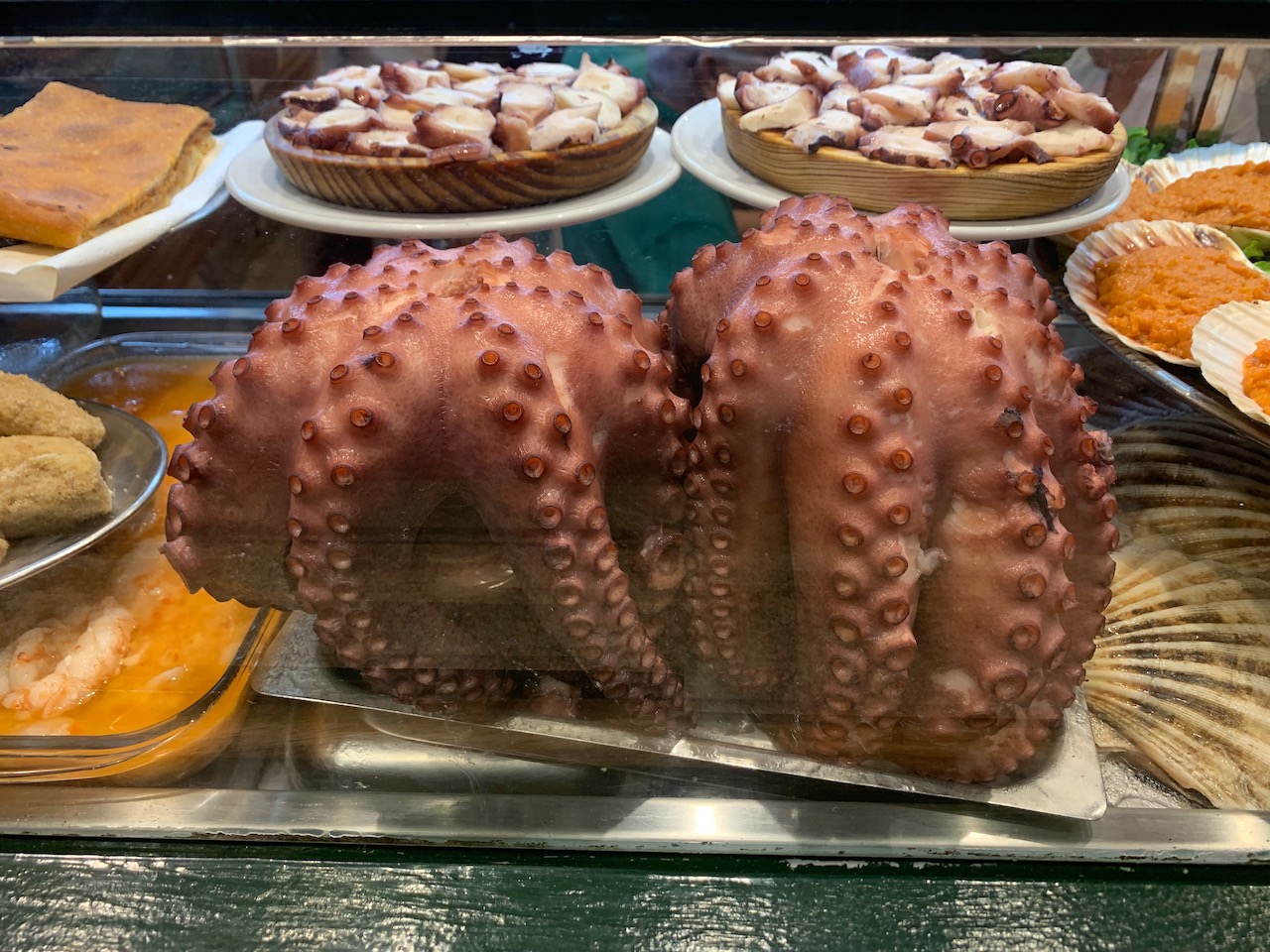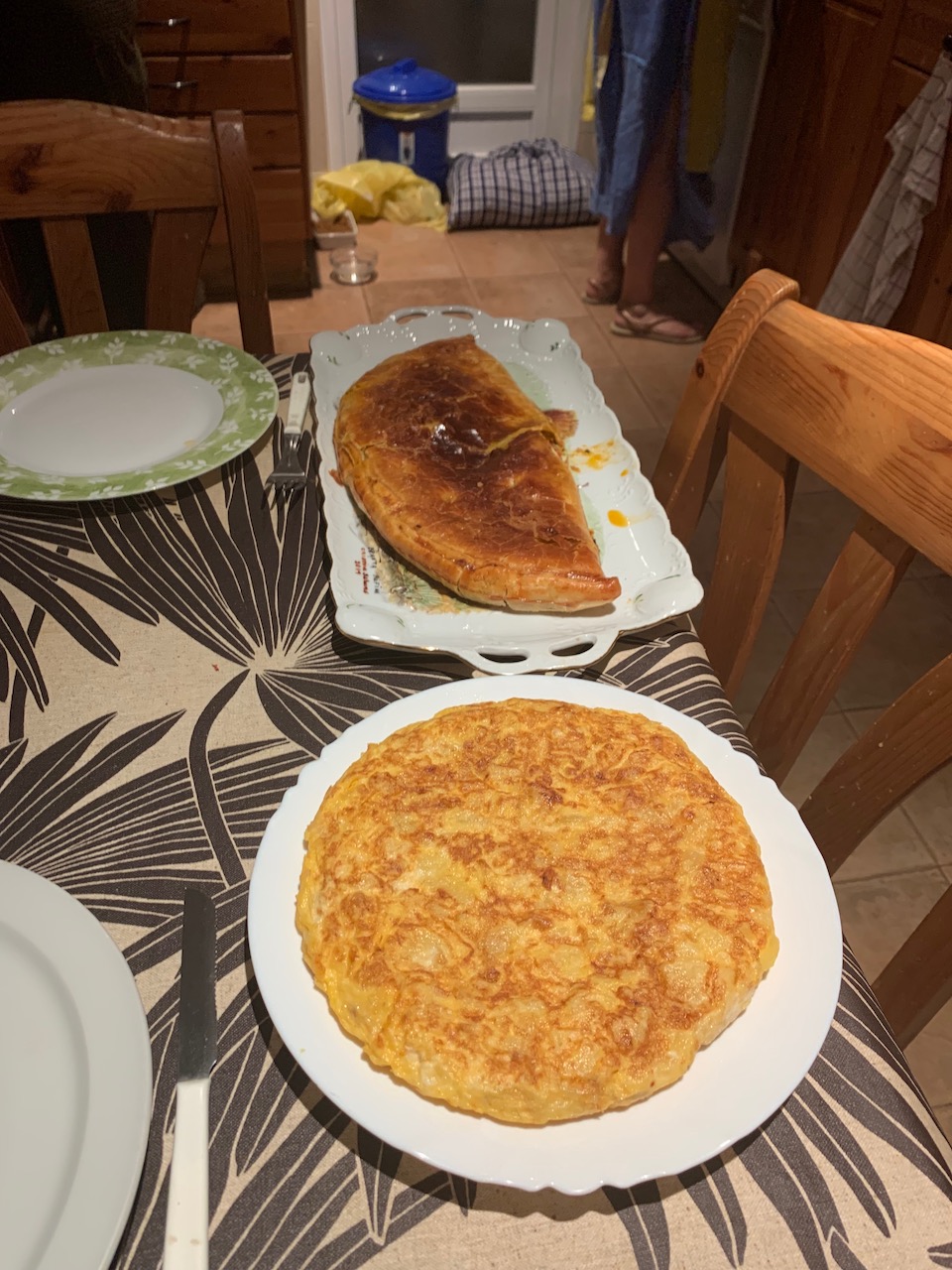
c/o Lia Franklin, Features Editor & Assistant Food Editor
Spain, like every other country in the world, has a very different food culture than the U.S.. Something I quickly learned after my first meal when I arrived for my semester abroad was that food is not something to be shoved down your gullet while sitting at your desk. Meals are an opportunity to converse and spend time with those around you, usually with a “cerveza” in hand. That being said, neither Spanish food culture nor cuisine is homogeneous. So I will take you on the geographic culinary experience, which I was so grateful to enjoy this past semester.
We begin in the northwest of Spain: Galicia, which is famous for its succulent “pulpo,” an octopus straight from the sea and often grilled. In Galicia, I ate more seafood than I have in my life, despite being a vegetarian; in Spain being vegetarian means you eat anything from the sea. From tiny grilled sardines to stewed mussels, the seafood is fresh, flavorful, and always on display. Here I was first introduced to Spanish tapas: small-plated portions of traditional delicacies. In Galicia, that was the large majority of the food, but it was in Madrid that my knowledge and love for tapas grew to new levels.
I assumed when coming to Madrid that I would be in a NYC-esque food scene. While it was not completely like my home city, I encountered many similarities. There were the small enclaves of Eastern Asian cuisines near Plaza de España, a street of Indian restaurants in Lavapiés, and a smattering of other multicultural restaurants. There was a Middle Eastern street food venue in Malasaña called Falafeleria. This became one of my favorite spots because of its incredibly flavorful array of ingredients. Atypical for Spain, it had two delectable hot sauces that I would copiously pour on top of every pickled and roasted dish that I ordered.

c/o Lia Franklin, Features Editor & Assistant Food Editor
However, for the most part, Spainards liked to keep their meals within the culinary range of their own country, a cuisine based on good fresh ingredients, no spice, and only a smattering of seasonings. Eggs, potatoes,“jamón,” and tomatoes always reigned supreme and usually a combination of these were served with a hefty chunk of bread. Honestly, everything is served with bread. As a vegetarian, I had only a few options of “tapas,” but the ones I could eat were delectable. From “tortilla española,” an egg and potato type frittata (cooked either sopping wet, with practically raw eggs or firm with dark brown potatoes), to “pimientos de padrón,” grilled green, shishito-like mild peppers topped with flaky salt, these dishes were simple but effective.
As part of the program, we were placed with host families, where I had the wonderful experience of getting a homemade Spanish dinner every night cooked by my fabulous host mom, Cristina. I was especially lucky, as Cristina had worked as a baker for years and really knew her way around the kitchen. She took great pride in making traditional foods, like her seafood paella (to die for!) and her giant empanadas stuffed with tuna, eggs, and tomatoes.
As the months got colder she made many a “caldo” (stew), often with beans and green vegetables. While I never really had a favorite meal per se, there are still two which I dream about. One is her “pisto,” a tomato and eggplant stew somewhat resembling ratatouille, which she would serve over garlic rice and place a fried egg on top. The other is a specialty dish of “mejillones con alubias blancas” (mussels with white beans), an incredibly flavorful stew packed with mussels still in their shells. These were some of the meals that shaped my abroad experience.
I had the pleasure of traveling outside of Madrid with the program and got to experience the cuisine from many other regions. We had traditional paella, with rabbit and chicken, in Valencia, and gazpacho, a cold tomato soup, in Córdoba. Then there were bitter oranges straight from the tree in Sevilla, and homemade marzipan in Toledo. In Barcelona, I decided it was time to make an exception to my pact against meat and try the famous “jamón Iberico,” which somewhat resembles prosciutto and is dried for more than a month before being cut extremely thin and served. I have to say it was delicious.
While many cuisines were delightful, as an American, I did experience a bit of a cultural shock. The heavy reliance on potatoes and bread, never forget the bread, was a stark contrast to my usually veggie-packed meals. The elongated meals and erratic times (lunch could be anywhere from 2 p.m. to 6 p.m.) were hard to grasp. It definitely was a push to adapt, but after being thrown into the deep end, I was grateful to be forced out of my comfort zone. Now, when I get a pang of hunger in the middle of the afternoon, I can’t help but let my mind wander to the scents of my host mom’s kitchen and my stomach craves the taste of tomatoes, bread, eggs, and potatoes.
Lia Franklin can be reached at lfranklin@wesleyan.edu.
Comments are closed